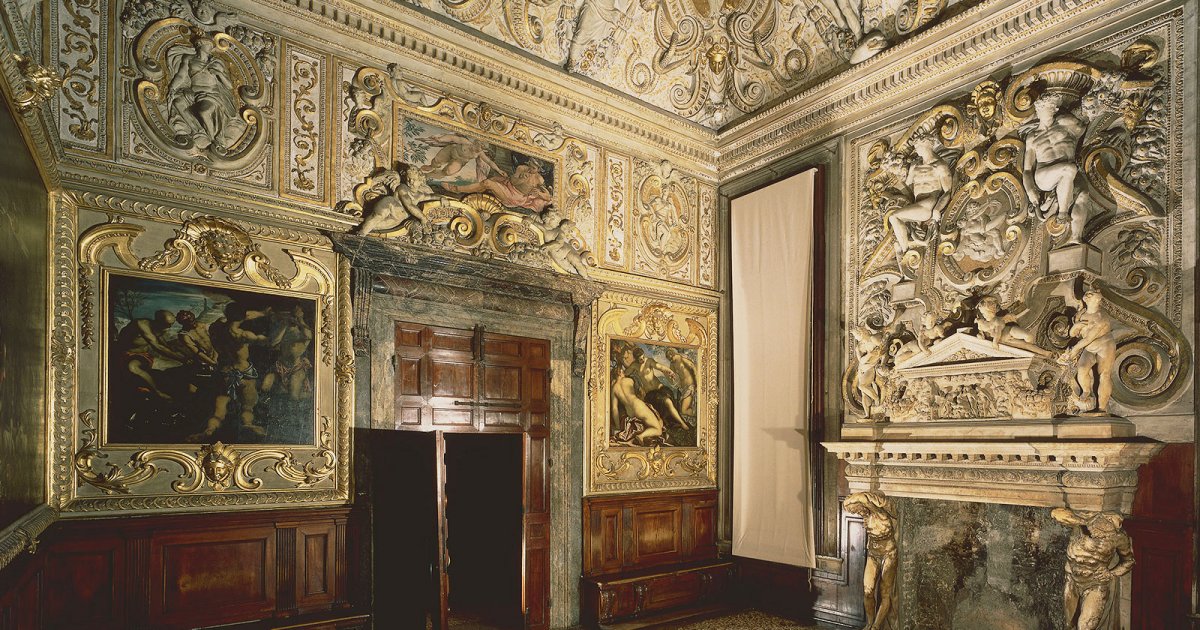DOGE'S PALACE, Anticollegio And Collegio
 Language: English / USA
Language: English / USA
You are now on the Second Noble Floor, in a room full of stuccoes with a magnificent fireplace flanked by sculpted figures: this is the so-called Anticollegio, or antechamber, which was designed by the great architect Andrea Palladio. It served as a waiting room for the famous people who came to visit the Doge. Along the walls you can see a real gallery of Venetian masters of the second half of the 16th century.
The four canvases that you see on the sides of the doors are by Jacopo Tintoretto, and have complex mythological subjects, rich in symbolic allusions. Each painting is set in a different season of the year and is linked to one of the four primordial elements: earth, water, air, and fire.
The Abduction of Europe from the end of the 1500s is one of the most famous works by Paolo Veronese, thanks to the elegant figure of Europe sitting on the white bull that, if you look carefully, is licking Europe's foot. The bull is actually the god Zeus, who is about to kidnap the girl.
Now pause the audio and go to the Sala del Collegio, or Cabinet Room.
The Sala del Collegio where you now stand was used to receive foreign ambassadors, which explains its spectacular decorations. The ceiling is one of the most precious in the building, and is divided into geometric panels of gilded and carved wood frames, some with very particular shapes. Inspired by the challenge offered by the unusual shapes, Paolo Veronese invented amazing female figures that symbolize various virtues or human activities.
The large composition that you can see on the back wall above the platform is also by Paolo Veronese. The platform was reserved for the Doge and members of the Cabinet: the six councilors, the wise men, the leaders of the Council of Ten, and the General Chancellor.
The walls are covered by a series of paintings by Tintoretto, and are all devoted to the doges. You might find them all a bit monotonous, since each combines the portrait of a doge with a scene of devotion, but Tintoretto always found effective solutions!
FUN FACT: some of the virtues depicted by Veronese in the T-shaped and L-shaped canvases on the ceiling can be identified thanks to the animals beside the various female figures: the dog is for loyalty, the lamb is for mildness, the ermine is for purity, the eagle is for moderation, and the crane is for attention.



